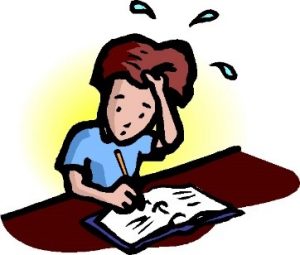Taking Notes
 Lectures can involve active listening and recording while trying to understand complex material in new jargon. Check out these suggestions for identifying what is important to write down from a lecture, and how to take notes so that you understand what you’ve written down later in the term.
Lectures can involve active listening and recording while trying to understand complex material in new jargon. Check out these suggestions for identifying what is important to write down from a lecture, and how to take notes so that you understand what you’ve written down later in the term.
- Effective note-taking requires multiple learning skills: active listening and focus, comprehending or understanding new material, organizing effectively and integrating new material with what you already know to increase memory.
- Prepare before class
- If your class has a lot of new terms, try to help build a ‘scaffold’ of basic vocabulary before you hear it in lectures.
- Review your course outline to see major themes, units or learning objectives.
- Use the SQR method to prepare study questions and focus your attention
- If your class is in-person, sit near the front to reduce distractions and improve active listening, especially in large or noisy classrooms. If your class is remote, limit your phone use: just like distracted driving, using your phone during lectures reduces your attention and concentration.
- The first few minutes often contain potential test questions or learning outcomes, while the last five minutes often have a summary component
- Use a note-taking strategy that matches that class
- If your professor has slides or notes available before class, print out or save them to your laptop in a note-taking format
- Do not assume that having access to a copy of slides or notes is the same as understanding that material
- Try Cornell note-taking or a mind map to improve comprehension
- Talk with a peer Learning Coach for suggestions on using OneNote or Glean in lectures
- Organize your notes shortly after class while you still remember the lecture
- Fill in any holes or gaps in your notes
- try swapping notes with a neighbor
- use your professor’s office hours to ask questions about unclear concepts or missed material
- Re-organize lecture notes or readings into charts to make studying easier
- Fill in any holes or gaps in your notes
